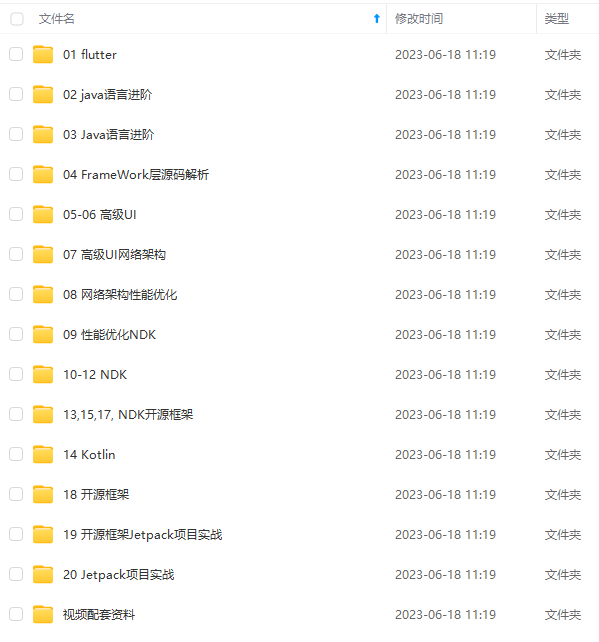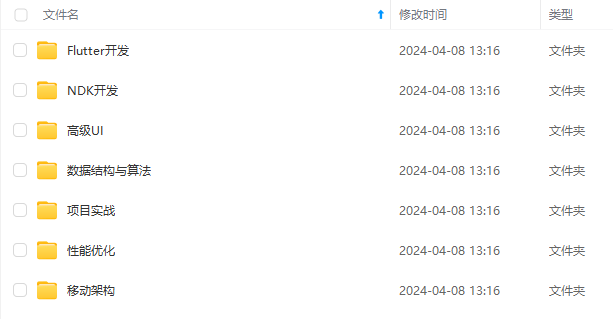((k = e.key) == key || (key != null && key.equals(k))))
break;
p = e;
}
}
if (e != null) { // existing mapping for key
V oldValue = e.value;
if (!onlyIfAbsent || oldValue == null)
e.value = value;
afterNodeAccess(e);
return oldValue;
}
}
++modCount;
if (++size > threshold)
resize();
afterNodeInsertion(evict);
return null;
}
我们来分析一下上面的代码,当我们调用put方法的时候,实际上调用的是putVal()方法。在调用的putVal的时候我们调用了HashMap内部的hash方法来根据我们的key得到一个hash值。
static final int hash(Object key) {
int h;
return (key == null) ? 0 : (h = key.hashCode()) ^ (h >>> 16);
}
当我第一次调用put方法的时候我们的table数组为null,putVal方法内部,会帮我们调用resize()方法帮我们生成一个默认大小的
数组。默认大小就是我们的DEFAULT_INITIAL_CAPACITY的值,为16。
static final int DEFAULT_INITIAL_CAPACITY = 1 << 4; // aka 16
数组初始化完成之后,会根据通过hash方法生成hash值与(n-1)做&运算计算出我们要存放数据的索引。n就是我们table的大小。
如果当前数组在这个索引没有值,则直接存储我们的value。如果当前数组在这个索引有值,三种情况去处理。
1.if (p.hash == hash && ((k = p.key) == key || (key != null && key.equals(k)))) e = p;
如果当前索引存放的值的key的hash值等于我们现在put的key的hash值,并且我们的key和当前索引存放的值是相等的,那我们就覆盖当前索引的值。(HashMap 数据不会重复,是否存放的同一个对象是通过key去判断的)。
2.else if (p instanceof TreeNode) e = ((TreeNode<K,V>)p).putTreeVal(this, tab, hash, key, value);
如果当前储存的值是TreeNode(树节点)。代表出现了hash冲突,我们为当前树新增一个叶子节点存放我们的数据。
3.else { for (int binCount = 0; ; ++binCount) { if ((e = p.next) == null) { p.next = newNode(hash, key, value, null); if (binCount >= TREEIFY_THRESHOLD - 1) // -1 for 1st treeifyBin(tab, hash); break; } if (e.hash == hash && ((k = e.key) == key || (key != null && key.equals(k)))) break; p = e; } }
否则我们生成一个新的节点,存放在当前值的后面形成一个链表。如果链表的节点数量大于TREEIFY_THRESHOLD - 1
则调用treeifyBin(tab, hash);把当前链表构造成一个树,存放在当前数组的索引上。
分析到这我们可以得出结论,HashMap是使用的链地址法解决的Hash冲突,如果链表的节点个数过多,我们就链表结构转换为
树结构。
我们继续往下看
if (++size > threshold)
resize();
如果当前存储存储的值的个数,大于threshold,我们调用resize方法。我们的threshold值等于什么呢 等于我们当前数组大小乘以一个DEFAULT_LOAD_FACTOR(装填因子),通过HashMap源码我们可以看到我们的DEFAULT_LOAD_FACTOR默认为0.75.
所以我们默认threshold为(int)(DEFAULT_LOAD_FACTOR * DEFAULT_INITIAL_CAPACITY),等于12。
下面我们继续来分析resize()方法。
if (oldCap > 0) {
if (oldCap >= MAXIMUM_CAPACITY) {
threshold = Integer.MAX_VALUE;
return oldTab;
} else if ((newCap = oldCap << 1) < MAXIMUM_CAPACITY &&
oldCap >= DEFAULT_INITIAL_CAPACITY)
newThr = oldThr << 1; // double threshold
} else if (oldThr > 0) // initial capacity was placed in threshold
newCap = oldThr;
Node<K,V>[] newTab = (Node<K,V>[])new Node[newCap];
table = newTab;
可以看到当我们的table数组存储的节点值大于threshold时,会按我们的当前数组大小的两倍生成一个新的数组,并把旧数组上的数据复制到新数组上这就是我们的HashMap扩容。伴随着一个新数组的生成和数组数据的copy,会有一定性能上的损耗。如果我们在使用HashMap的是能够明确HashMap能够一开始就清楚的知道HashMap存储的键值对个数,我建议我们使用HashMap的另一个构造方法。
public HashMap(int initialCapacity) { this(initialCapacity, DEFAULT_LOAD_FACTOR); }
注意了这个initialCapacity值最好去2的整数次幂。如果我们要存放40个键值对,那我们这个initialCapacity最好传64。至于为什么这样,我们下次在去讨论。
下面我们来分析HashMap的get方法:
public V get(Object key) {
Node<K,V> e;
return (e = getNode(hash(key), key)) == null ? null : e.value;
}
final Node<K,V> getNode(int hash, Object key) {
Node<K,V>[] tab; Node<K,V> first, e; int n; K k;
if ((tab = table) != null && (n = tab.length) > 0 &&
(first = tab[(n - 1) & hash]) != null) {
if (first.hash == hash && // always check first node
((k = first.key) == key || (key != null && key.equals(k))))
return first;
if ((e = first.next) != null) {
if (first instanceof TreeNode)
return ((TreeNode<K,V>)first).getTreeNode(hash, key);
do {
if (e.hash == hash &&
((k = e.key) == key || (key != null && key.equals(k))))
return e;
} while ((e = e.next) != null);
}
}
return null;
}
在get的时候,我们首先会根据我们的key去计算它的hash值,如果这个hash值不存在,我们直接反回null。
如果存在,在没有发生hash冲突的情况下也就是根据当前hash值计算出的索引上的存储数据不是以树和链表的形式存储的时候,我们直接返回当前索引上存储的值,如果时链表树,我们就去遍历节点上的数据通过equals去比对,找到我们需要的在返回。
通过上面我可以得出结论,当HashMap没有发生hash冲突时,hashMap的查找和插入的时间复杂度都是O(1),效率时非常高的。
当我们发生扩容和hash冲突时,会带来一定性能上的损耗。
HashMap大致分析完了。
下面我们来分析分析Android为我们提供的ArrayMap和SparseArray。
二.我们在来看看ArrayMap:
public class ArrayMap<K, V> extends SimpleArrayMap<K, V> implements Map<K, V> {
MapCollections<K, V> mCollections;
int[] mHashes;
Object[] mArray;
通过源码我们可以看到ArrayMap继承自SimpleArrayMap实现了Map接口,ArrayMap内部是两个数组,一个存放hash值,一个存放Obeject对象也就是value值,这一点就和HashMap不一样了。我们现来看看ArrayMap的构造方法:
public ArrayMap(int capacity) {
super(capacity);
}
public SimpleArrayMap() {
mHashes = ContainerHelpers.EMPTY_INTS;
mArray = ContainerHelpers.EMPTY_OBJECTS;
mSize = 0;
}
我们发现ArrayMap的初始化会给我们初始化两个空数组,并不像HashMap一样为我们默认初始化了一个大小为16的table数组,下面我们继续往下看:
public V put(K key, V value) {
final int osize = mSize;
final int hash;
int index;
if (key == null) {
hash = 0;
index = indexOfNull();
} else {
hash = key.hashCode();
index = indexOf(key, hash);
}
if (index >= 0) {
index = (index<<1) + 1;
final V old = (V)mArray[index];
mArray[index] = value;
return old;
}
index = ~index;
if (osize >= mHashes.length) {
-
final int n = osize >= (BASE_SIZE*2) ? (osize+(osize>>1))
- (osize >= BASE_SIZE ? (BASE_SIZE*2) : BASE_SIZE);
if (DEBUG) Log.d(TAG, "put: grow from " + mHashes.length + " to " + n);
final int[] ohashes = mHashes;
final Object[] oarray = mArray;
allocArrays(n);
if (CONCURRENT_MODIFICATION_EXCEPTIONS && osize != mSize) {
throw new ConcurrentModificationException();
}
if (mHashes.length > 0) {
if (DEBUG) Log.d(TAG, “put: copy 0-” + osize + " to 0");
System.arraycopy(ohashes, 0, mHashes, 0, ohashes.length);
System.arraycopy(oarray, 0, mArray, 0, oarray.length);
}
freeArrays(ohashes, oarray, osize);
}
if (index < osize) {
if (DEBUG) Log.d(TAG, "put: move " + index + “-” + (osize-index)
- " to " + (index+1));
System.arraycopy(mHashes, index, mHashes, index + 1, osize - index);
System.arraycopy(mArray, index << 1, mArray, (index + 1) << 1, (mSize - index) << 1);
}
if (CONCURRENT_MODIFICATION_EXCEPTIONS) {
if (osize != mSize || index >= mHashes.length) {
throw new ConcurrentModificationException();
}
}
mHashes[index] = hash;
mArray[index<<1] = key;
mArray[(index<<1)+1] = value;
mSize++;
return null;
}
我们先看看put方法的实现。首先就是判段key是否null,是null,hash值直接置为0,如果不为null,通过Obejct的hashCode()方法计算出hash值。然后通过indexfOf方法计算出index的值。下面我们来看看indexOf方法:
int indexOf(Object key, int hash) {
final int N = mSize;
// Important fast case: if nothing is in here, nothing to look for.
if (N == 0) {
return ~0;
}
int index = binarySearchHashes(mHashes, N, hash);
// If the hash code wasn’t found, then we have no entry for this key.
if (index < 0) {
return index;
}
// If the key at the returned index matches, that’s what we want.
if (key.equals(mArray[index<<1])) {
return index;
}
// Search for a matching key after the index.
int end;
for (end = index + 1; end < N && mHashes[end] == hash; end++) {
if (key.equals(mArray[end << 1])) return end;
}
// Search for a matching key before the index.
for (int i = index - 1; i >= 0 && mHashes[i] == hash; i–) {
if (key.equals(mArray[i << 1])) return i;
}
// Key not found – return negative value indicating where a
// new entry for this key should go. We use the end of the
// hash chain to reduce the number of array entries that will
// need to be copied when inserting.
return ~end;
}
我们可以看到indexOf方法内部是根据binarySearchHashes()去搜索hash值得,下面我们再来看看binarySearchHashes()
内部调用了ContainerHelpers.binarySearch(hashes, N, hash);我们在看来看看binarySearch方法。
static int binarySearch(int[] array, int size, int value) {
int lo = 0;
int hi = size - 1;
while (lo <= hi) {
int mid = (lo + hi) >>> 1;
int midVal = array[mid];
if (midVal < value) {
lo = mid + 1;
} else if (midVal > value) {
hi = mid - 1;
} else {
return mid; // value found
}
}
return ~lo; // value not present
}
可以发现binarySearch是典型得二叉搜索算法。所以我们可以得出结论,ArrayMap插入和索引是基于二叉搜索实现得。这种搜索得效率也很高,他的时间复杂度O(log(n)),但是和HashMap O(1)还是有点差距的。
下面我们继续看indexOf方法,如果我们通过二叉搜索查到得index值小于0,代表我们没有存储过该数据则直接返回,如果index大于0,我们就去通过equals去比对原来索引得上得key,如果相等,代表我们存储过该值,直接返回index,到时候我们存储的时候会直接覆盖掉当前已经存储得值。如果不相等,出现Hash冲突,重新计算出一个index值返回。
下面我们来看看ArrayMap如何处理Hash冲突和扩容的(我们没有指定容量的时候,ArrayMap默认初始化了两个空数组)。
if (osize >= mHashes.length)
出现hash冲突后,如果我们的存储数据数量大小已经大于等于我们的hash数组的大小。我们对数组进行扩容。
-
final int n = osize >= (BASE_SIZE*2) ? (osize+(osize>>1))
- (osize >= BASE_SIZE ? (BASE_SIZE*2) : BASE_SIZE);
if (mHashes.length > 0) {
if (DEBUG) Log.d(TAG, “put: copy 0-” + osize + " to 0");
最后
自我介绍一下,小编13年上海交大毕业,曾经在小公司待过,也去过华为、OPPO等大厂,18年进入阿里一直到现在。
深知大多数初中级Android工程师,想要提升技能,往往是自己摸索成长,自己不成体系的自学效果低效漫长且无助。
因此我收集整理了一份《2024年Android移动开发全套学习资料》,初衷也很简单,就是希望能够帮助到想自学提升又不知道该从何学起的朋友,同时减轻大家的负担。




既有适合小白学习的零基础资料,也有适合3年以上经验的小伙伴深入学习提升的进阶课程,基本涵盖了95%以上Android开发知识点!不论你是刚入门Android开发的新手,还是希望在技术上不断提升的资深开发者,这些资料都将为你打开新的学习之门
如果你觉得这些内容对你有帮助,需要这份全套学习资料的朋友可以戳我获取!!
由于文件比较大,这里只是将部分目录截图出来,每个节点里面都包含大厂面经、学习笔记、源码讲义、实战项目、讲解视频,并且会持续更新!
业,曾经在小公司待过,也去过华为、OPPO等大厂,18年进入阿里一直到现在。**
深知大多数初中级Android工程师,想要提升技能,往往是自己摸索成长,自己不成体系的自学效果低效漫长且无助。
因此我收集整理了一份《2024年Android移动开发全套学习资料》,初衷也很简单,就是希望能够帮助到想自学提升又不知道该从何学起的朋友,同时减轻大家的负担。
[外链图片转存中…(img-UHJAilIn-1715623791856)]
[外链图片转存中…(img-LyzwexuX-1715623791857)]
[外链图片转存中…(img-Y63I3mt6-1715623791858)]
[外链图片转存中…(img-2PXHRlLf-1715623791859)]
既有适合小白学习的零基础资料,也有适合3年以上经验的小伙伴深入学习提升的进阶课程,基本涵盖了95%以上Android开发知识点!不论你是刚入门Android开发的新手,还是希望在技术上不断提升的资深开发者,这些资料都将为你打开新的学习之门
如果你觉得这些内容对你有帮助,需要这份全套学习资料的朋友可以戳我获取!!
由于文件比较大,这里只是将部分目录截图出来,每个节点里面都包含大厂面经、学习笔记、源码讲义、实战项目、讲解视频,并且会持续更新!






















 6544
6544

 被折叠的 条评论
为什么被折叠?
被折叠的 条评论
为什么被折叠?








